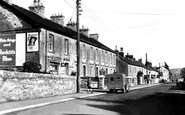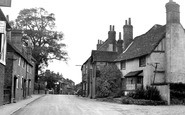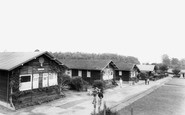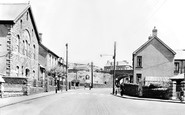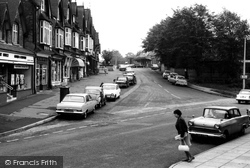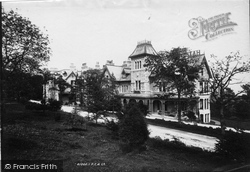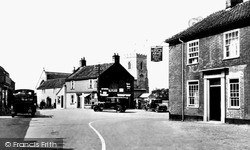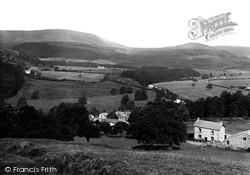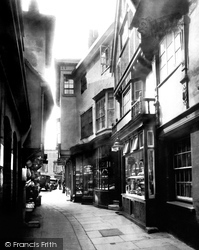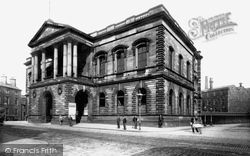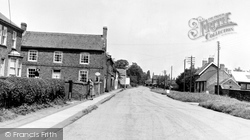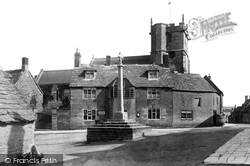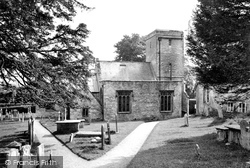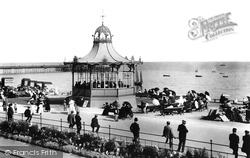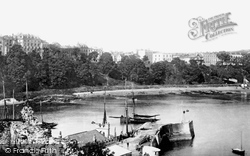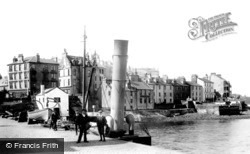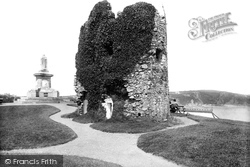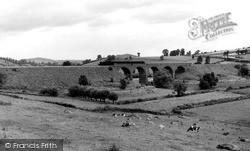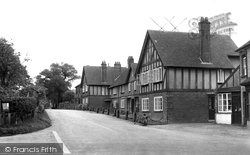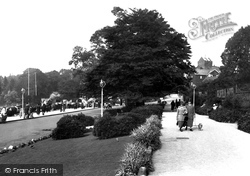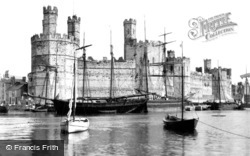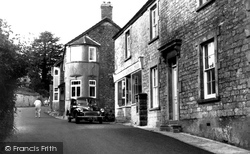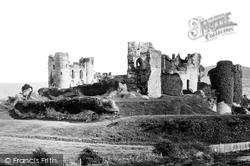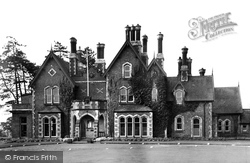Places
3 places found.
Those places high-lighted have photos. All locations may have maps, books and memories.
Photos
68 photos found. Showing results 1,461 to 68.
Maps
12 maps found.
Books
15 books found. Showing results 1,753 to 15.
Memories
7,564 memories found. Showing results 731 to 740.
Dunsmore People And Happenings Remembered
PREFACE TO THE SECOND EDITION In 1995, when the first edition of this history was published, it seemed incredibly optimistic to have had three hundred copies printed for a market which was ...Read more
A memory of Dunsmore by
Childhood In Wreckenton
I started school at St Oswald's RC in 1944. We lived on Tanfield Road. I remember the head teacher was called Miss Wilfred, and later we had a headmaster called Mr Clancy. I remember when the war finished and we had to ...Read more
A memory of Wrekenton in 1940 by
Wonderful Memories Growing Up In Bassaleg
I lived in Bassaleg from the age of 3, (1955), when Church Crescent and surrounding area was being developed. I lived in Church Crescent with my family until I left for Manchester in 1976. I went to the ...Read more
A memory of Bassaleg in 1966 by
Memories Of My Childhood
I was born in 1956, in Wiltshire, but my first memories are of Pawlett, where we moved, when I was very small. It was a smaller, quiter village than it is even now. I went to the village school, on the village green, next to ...Read more
A memory of Pawlett in 1961 by
The Old Mill Coytrahen
My memories of Coytrahen go back to the 1930s and 1940s. I was born in 1931 at The Old Mill, home of my Grandparents and spent many summers visiting there. The Old Mill was rather off the beaten track ,getting there from ...Read more
A memory of Coytrahen Ho in 1930 by
I Was Born Here
Seeing this photo brings back many happy memories, on the left of the photo are two black gates and the first cottage next to them is where I was born back in 1955. Shortly afterwards they were demolished and a service road was put in ...Read more
A memory of Twyford in 1955 by
Dukeshouse Wood Camp School (Part Two)
My recollection of a dance that was arranged in the sports hall made me and another lad George Bishop decide to abstain from the proceedings as I think at the time, in fact I am sure about myself that I was very ...Read more
A memory of Hexham in 1940 by
Carol Singing
I too rememeber Rev Milner and his wife also going carol singing down Knatts valley before the war. Does anyone remember Mr Rudd who looked after the greens at Woodlands golf course, a little short chap he was? Also any memories ...Read more
A memory of Knatts Valley in 1930 by
Caerau Square
Looking at this photo of the Square at Caerau brings back some happy memories of when the steam train would pass over the bridge in all its glory with the steam coming out of its funnel. The big billboard before the bridge was the only ...Read more
A memory of Caerau in 1955 by
Ice Cream
Reading your comments about Salford Gone and the ice cream man brought back similar memories to me. I was born at 34 Nora Street, Salford 7 in 1950. Albeit Lower Broughton. However, we used to have an Ice Cream seller who came EVERY Friday ...Read more
A memory of Salford in 1950 by
Captions
2,501 captions found. Showing results 1,753 to 1,776.
The railway station at the back of this picture is the reason for Dorridge's existence. Until the London to Birmingham railway was built in 1852, there was no Dorridge.
The Furness Railway Company once owned the Hazelwood Hydro. Originally it was known as Brown Robin Mansion, and was built as a private residence.
Old vehicles in the centre of Ludham village have their spare wheels attached to the side of the bonnet. The right-hand car has a 'dickey' seat at the back, closed in the photograph.
The point from which this photograph was taken, Seed Hill, was at that time in Yorkshire, but looks over the border, defined here by the Hodder, across a corner of Lancashire.
This narrow lane shows exactly how the back streets of the old town would have looked 200 years ago.
Cam Beck once powered the 13th-century mill. Next to the stream is the old Methodist chapel of 1860, now a house, but with gravestones still in the back garden.
Land behind the Town Hall was used for industry for many years: the Spring Mill buildings and the cupola of Pleck Brass Works are visible to the right.
This is locally known as the back road to Lincoln, and it looks a well surfaced village road.
From the Church 1897 One of the darkest deeds in English history took place in Saxon times, when King Edward was murdered by his stepmother in 978.
The church and graveyard have been immortalised in his poems and novels. The church is small, and dates from Norman times, with many later additions.
Worthing's was a good example, with screens to protect the band from the sea breezes and an elegant wrought iron openwork cupola to its ogee roof.
In the foreground we can see the roof of Laston House, a purpose-built bath-house which operated between 1810 and the early 1830s.
This view shows the backs of buildings along Kempock Street. Kempock Place is just in view on the extreme left of the picture.
This view shows the backs of buildings along Kempock Street. Kempock Place is just in view on the extreme left. Over to the right is Seaton's temperance hotel, one of several in the town.
Once a defender's last refuge, the Norman keep comprises a domed circular tower and square stair tower.
Looking from the B3153, just east of the town, this photograph shows a local train hauled by a steam engine, whilst the cows below, well used to the noise, continue unconcernedly chewing
As can be seen from the two television aerials sprouting above the rooftop on the right, modern innovations in home entertainment were already making their presence felt in the early sixties.
Here we have a fine overview of the town centre against a backdrop of the Fairfield Horseshoe group of mountains.
The spacious Promenade created around 1912 is here shown to advantage.
A horse takes a breather and feeds from its nosebag on the pavement.The cart on the left looks like a brewer's dray - in the back are barrels - and is probably delivering to the Black Bull on the right.There
This great citadel was erected by Edward I of England between 1285 and 1322 as one of a chain of castles by which he kept a secure footing in Wales.
The Victorian commercial heart of this cul-de-sac village, strung out along the back lane into Melbury Park, was represented by the Melbury Osmond shop.
However, de Clare had the backing of the barons and retook his own castle by force, forcing the Welsh to withdraw.
Whitby Hall, seen here, was built in Stanney Lane by the Grace family in the 1860s. In 1931 it was purchased by the council, who used the building as offices.
Places (3)
Photos (68)
Memories (7564)
Books (15)
Maps (12)



